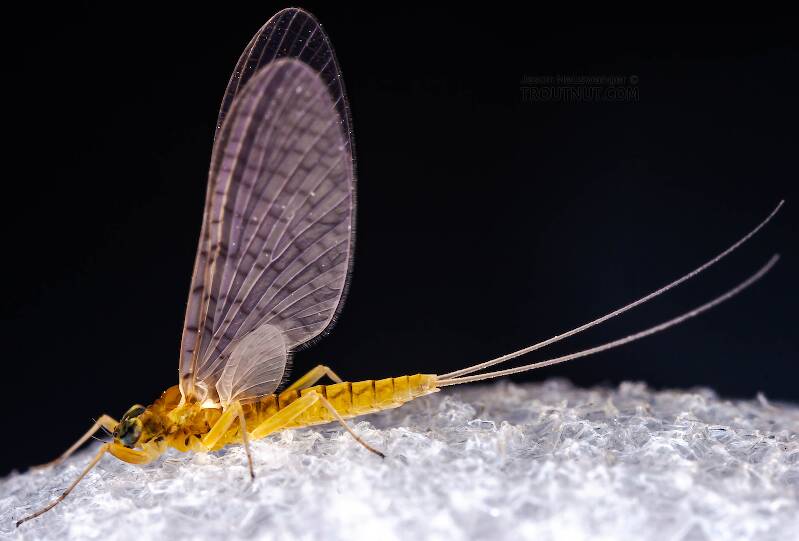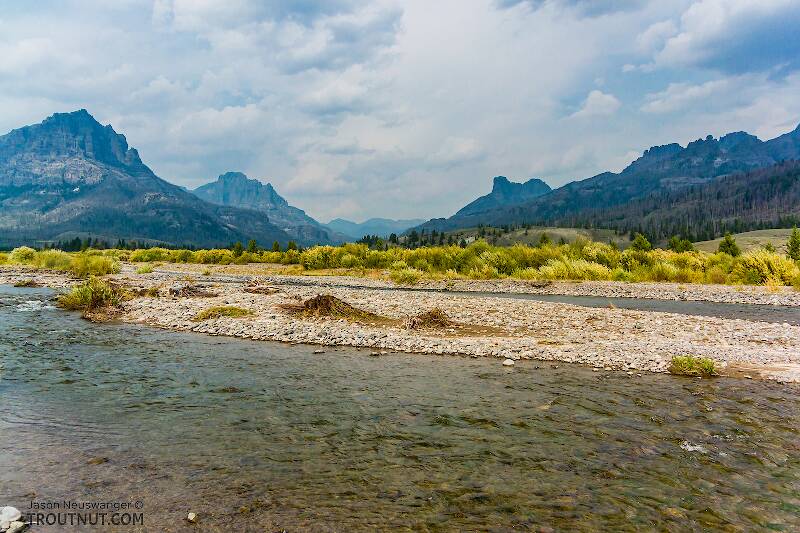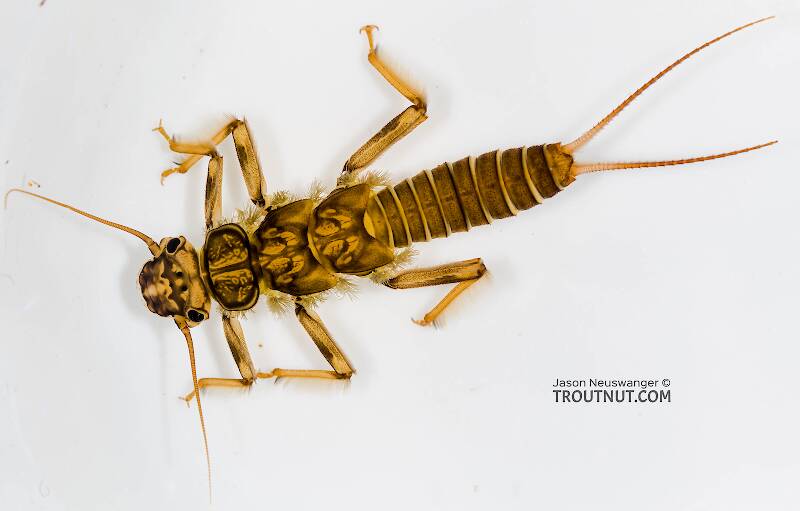
Salmonflies
Pteronarcys californica
The giant Salmonflies of the Western mountains are legendary for their proclivity to elicit consistent dry-fly action and ferocious strikes.
Featured on the forum

Troutnut is a project started in 2003 by salmonid ecologist Jason "Troutnut" Neuswanger to help anglers and
fly tyers unabashedly embrace the entomological side of the sport. Learn more about Troutnut or
support the project for an enhanced experience here.

I found this dun on the same piece of stream as a similar spinner, probably of the same species.
GONZO on Oct 6, 2006October 6th, 2006, 6:39 am EDT
Haven't checked any keys to verify, but most of the little late-season Cahill-looking duns are Leucrocuta. If I had to guess at the species, I'd say hebe (Little Yellow Quill). It is probably the most common L. spp. in the East and has a long hatching period that extends well into the fall.
I would also agree that the spinner you photographed is the same species.
I would also agree that the spinner you photographed is the same species.


